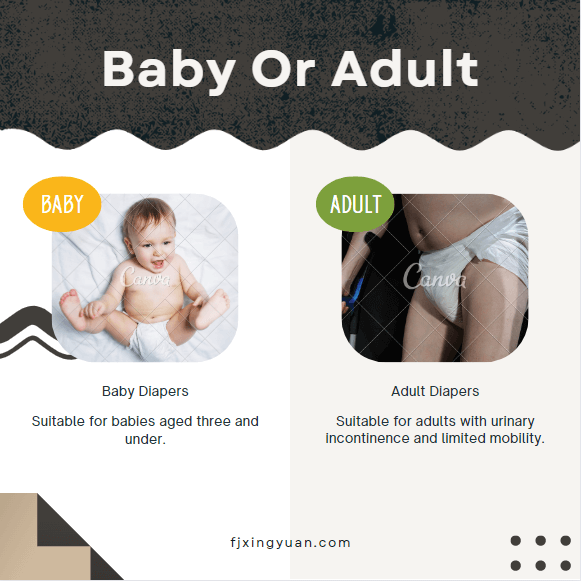Size and Shape
Baby diapers are primarily designed for newborns and infants up to 3 years old, so they are smaller in size to accommodate the size and shape of a baby's body. Adult diapers, on the other hand, are larger to fit the size and shape of an adult's body.
Absorbency
Baby diapers require higher absorbency to handle frequent urination and bowel movements of infants. They typically use highly absorbent materials (non-woven fabric wrapped around absorbent paper) that quickly absorb liquids and keep the surface dry. Adult diapers also need good absorbency, but the absorbent capacity may be higher compared to baby diapers. They often use a combination of diaper tissue paper and superabsorbent polymers.
Elasticity and Fit
Baby diapers need to have higher elasticity and fit to accommodate the movements and postures of babies. They usually have soft waistbands and leg elastic to ensure comfortable wearing and prevent leakage. Adult diapers also require a good fit, but the emphasis may be more on comfort and convenience.
Leakage Protection
Baby diapers often have specialized leakage protection structures around the leg area to prevent urine from leaking. This is due to the unique urination posture and volume of babies. Adult diapers can also incorporate similar leg leakage protection designs, but it may not be as emphasized as in baby diapers.
Target Users and Functions
Baby diapers are primarily designed for infants and toddlers who require diapers to keep them dry and clean. Adult diapers, on the other hand, are designed for adults, especially those with urinary incontinence, limited mobility, or who need to be away from a restroom for an extended period of time. https://www.fjxingyuan.com
